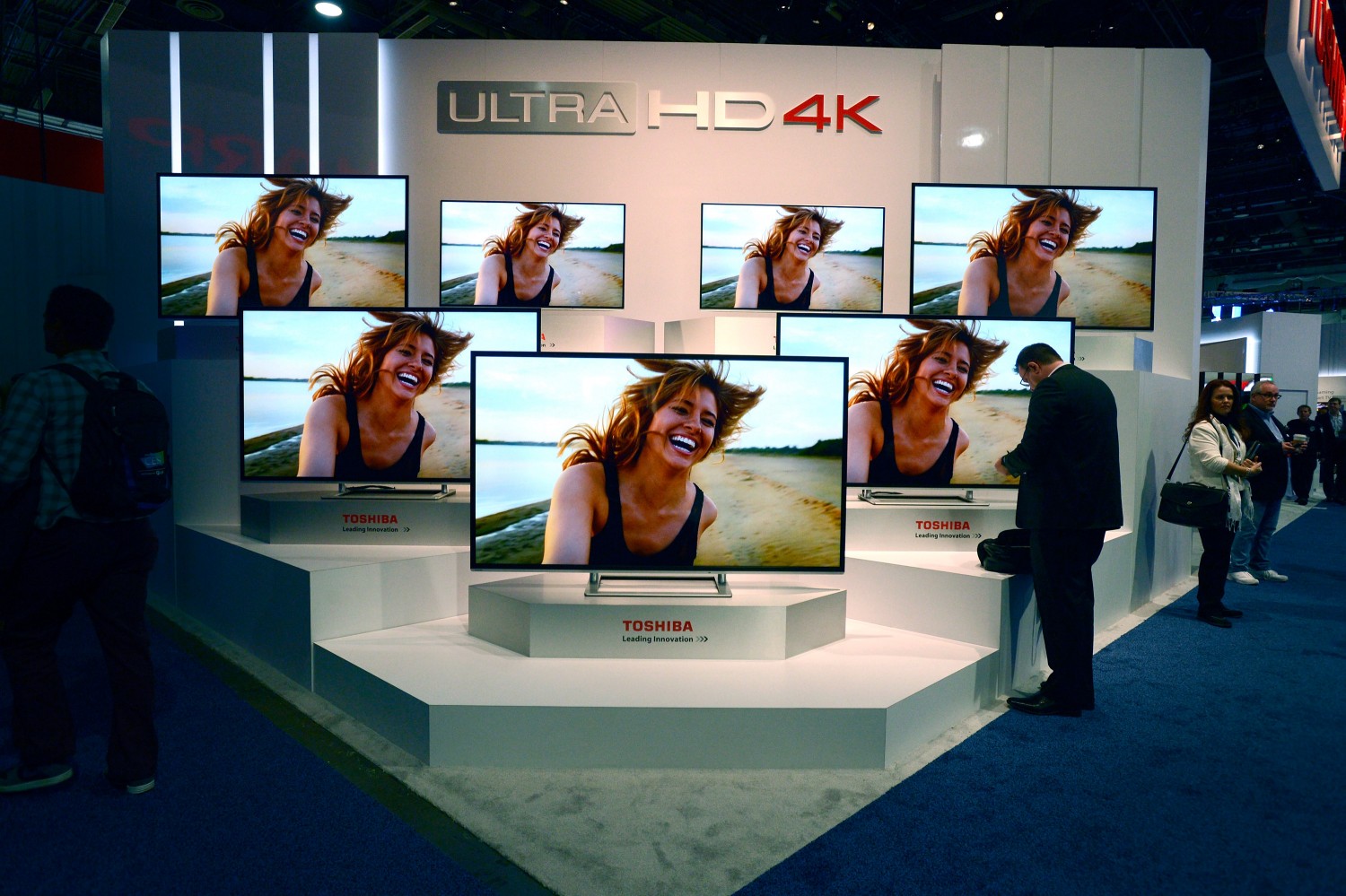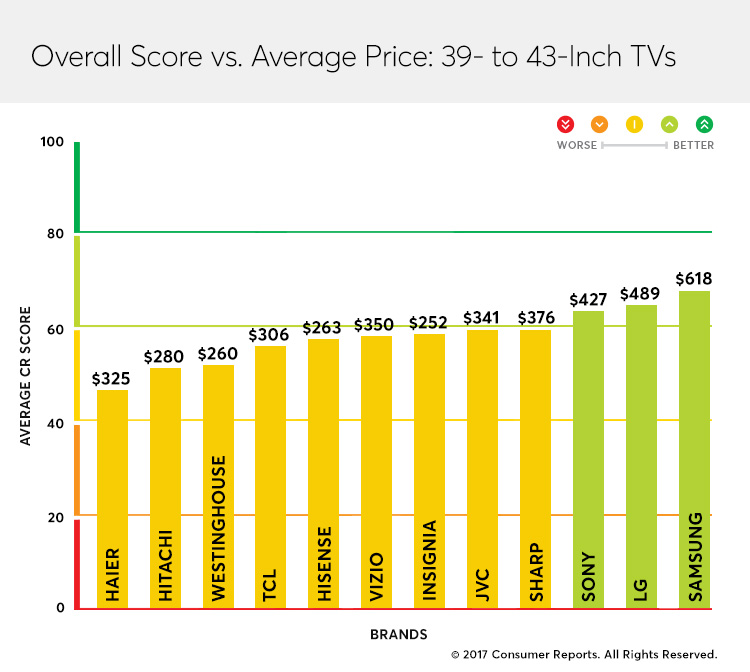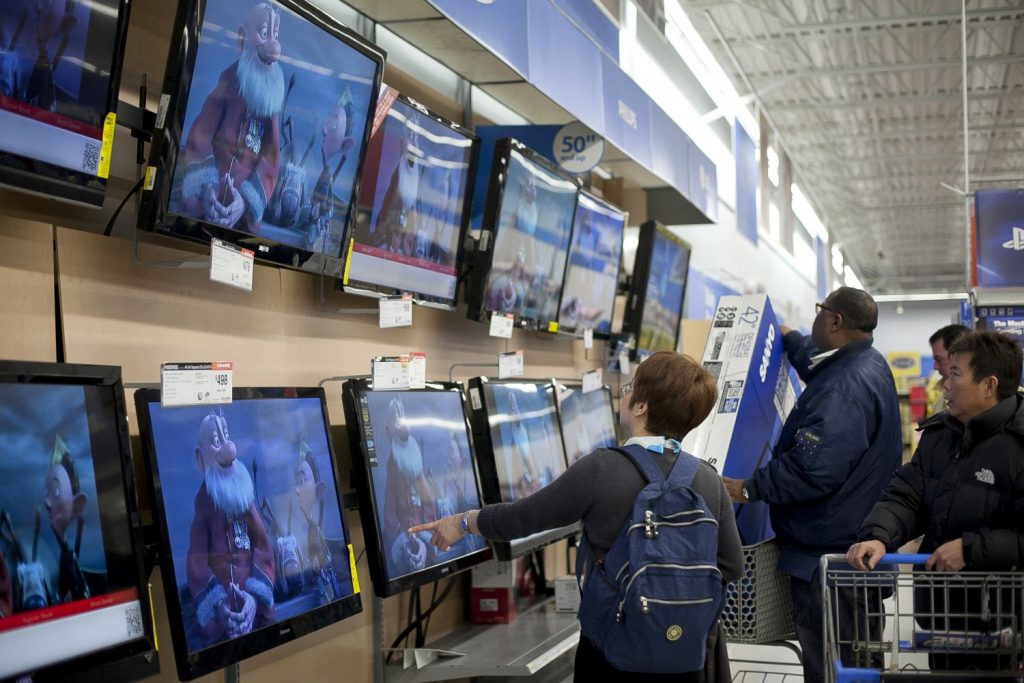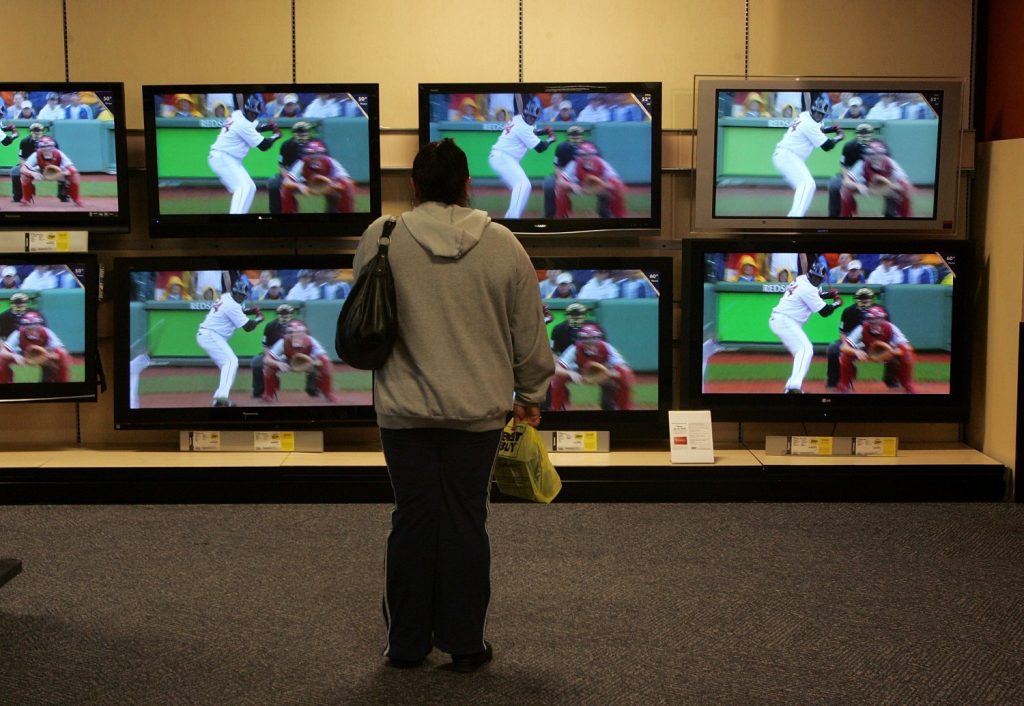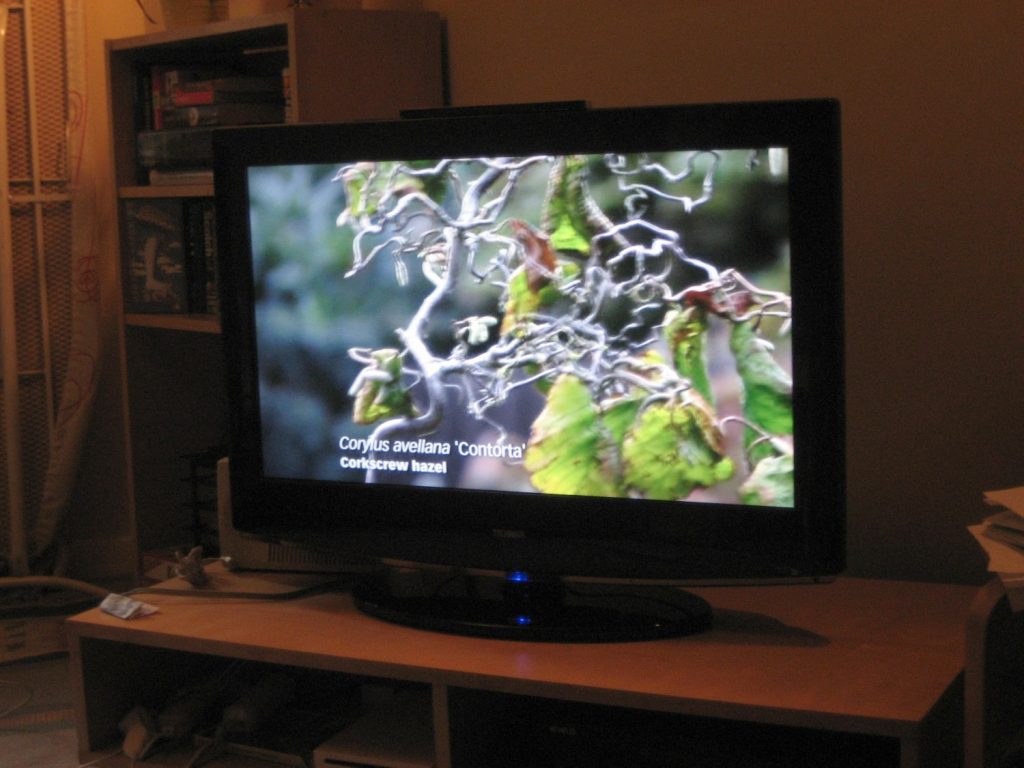Bills, student loans and lunch money for the kids: It all adds up! So when you’re buying a new TV, it’s easy to say “Let’s just get the cheaper one!” But like your car, kitchen appliances and other technology-related devices, buying cheap may mean unexpected expenses later on.
Consumer Reports crunched three years of test results from some of the most popular TV brands sold in the U.S. The organization rates TVs on everything from HD (high-definition) picture quality to energy savings to how difficult the TV is to set up.
As you may expect, some of the best-known brands like Samsung and Sony performed the best across the board. Not surprisingly, they also cost more.
For example, when evaluating the performance ratings for 39- to 43-inch TV sets, Sony, LG and Samsung took the top three spots in terms. Those companies’ TV sets ranged from $427 to $618, whereas lower-performing brands like Hitachi and Vizio are $280 and $350 respectively.
What Are You Risking By Spending Less?
Like any other purchase, it is tempting to select the more inexpensive option. But, according to Consumer Reports, saving big by purchasing the lesser-known brand could result in poorer quality.
When you’re at the TV store, you’re allowed to ask for a demonstration. Here are suggestions for testing a TV’s quality for yourself:
- Look at TV screens from multiple angles, especially curved TVs.
- Insist on watching a real-life show (like “The Real Housewives” versus an animated show, like “Family Guy”) and flick between picture modes.
- Watch panning shots and scenes with quick movement to check if the TV struggles with motion.
Bigger is also better when purchasing a TV. According to the product review site CNET, one of the top purchasing complaints from customers is that they didn’t go big enough. Their experts say stepping up screen size is the best way to spend your money.
Consumer Reports’ research backs up that statement. Televisions 60 inches or larger got some of the highest performance ratings across the board!
Also, remember to check out the manufacturers’ warranties, which are often shorter with off-brand TVs.
What To Know If You Have To Go Cheap
Let’s face it… if it costs you more than $20, it’s hard to call anything cheap. The newest and sharpest TV is not at the top of everyone’s priority list. If you have to choose an inexpensive TV option, here some tips for getting the best bang for your buck.
- You don’t have to sacrifice quality with smaller TVs. The smaller the screen size, the smaller the price difference. For example, the worst performing 32-inch TV brand (Haier) is $223 and the best performing (Samsung) is $310… a difference of just $87. Meanwhile, the price difference for 60-inch TVs is $601 (a $1,409 Sharp versus a $2,010 Samsung).
- It’s usually easier to get a major brand fixed. A lesser-known, cheaper brand saves you in the short term, but it’s more difficult to find parts and a repairman who knows the product when it breaks down.
- Reliability often is key. According to CR, some secondary brands do just as well as major brands when it comes to long-lasting TVs. However, Sceptre appears to be more susceptible to problems in the first three years of ownership. You can always consult Consumer Reports for ratings on individual TVs if you have a particular model in mind.
Tips For Buying A TV, Regardless Of Price
- Learn the lingo. Like, what is smart technology? If you want internet capabilities (if you can’t live without Netflix and Hulu, you probably do) you need a ‘smart TV.’ Best Buy has a great guide that lets you comb through features before you buy.
- Pay attention to resolution. CNET reports 4K TVs (four times the resolution of 1080p TVs) are coming down in price because they’re easier for manufacturers to produce. It’s a feature you’ll want to look out for.
- Make sure you test in the right mode. Did you know TVs come with a Store or Demo Mode? Make sure it’s turned off when you’re shopping. This setting automatically ramps up the brightness and color saturation, which looks great in a big-box store, but not so great at home.
The best TV choice for you is one that fits your family’s budget and needs. If it makes sports, dramas and cartoons all look great, that’s an added bonus. Happy TV shopping!
